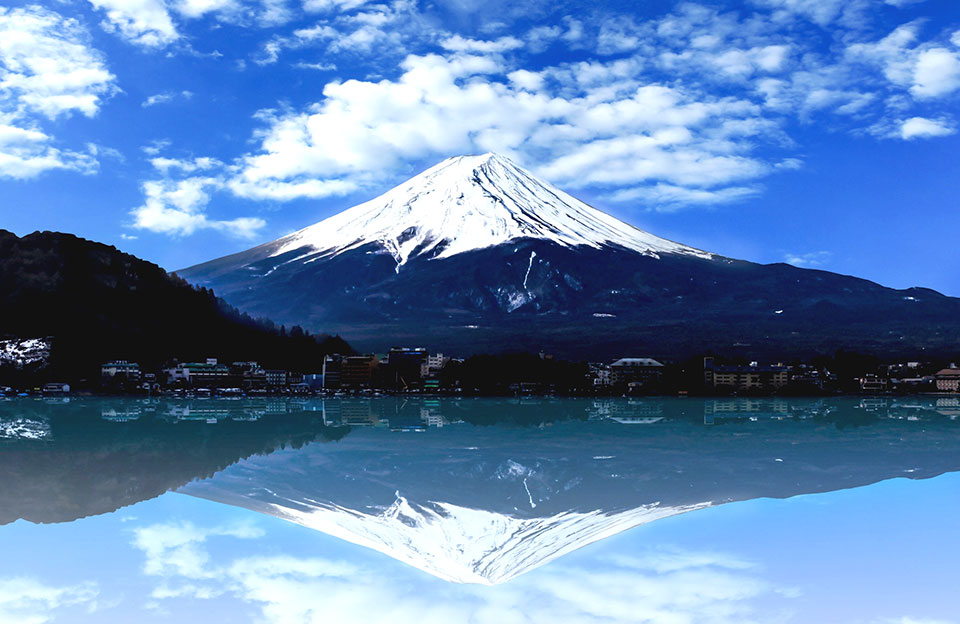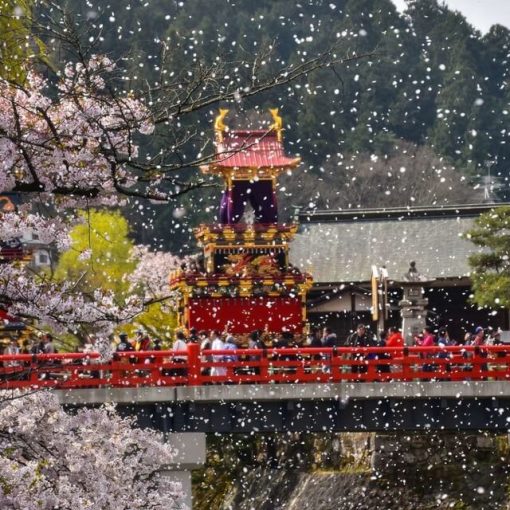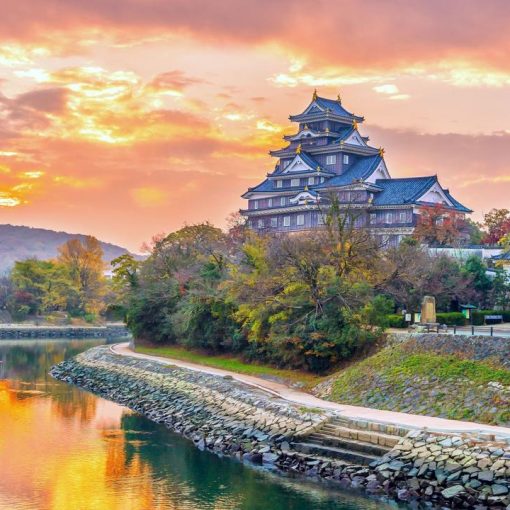Shizuoka is the capital of Shizuoka Prefecture and is located on the northwestern shore of Suruga Bay.
Shizuoka is famous primarily for its nature and natural sites: Suruga Bay, Enshu Sea, Hamana Lake, Tenryu and Oi Rivers. You can see Mount Fuji.
The birth of a mountain
Strictly speaking, Fujiyama – or Fuji-san, as it is customary to add among the Japanese as a sign of immense respect – is not just a mountain, but a real stratovolcano. This type of volcano has a conical shape and is formed from hardened layers of lava and ash. Seismologists have established that the formation of Fujiyama was due to numerous eruptions that occurred several hundred thousand years ago.

Japanese mythology tells that in 286 BC. e. the earth suddenly opened up, and the largest Lake Biwa in the Land of the Rising Sun was formed, and a sacred mountain formed from the ground by itself in one night. The legend is naive, but not groundless: the island of Honshu, on which Mount Fuji rises, is located at the junction of the Pacific, Eurasian and Philippine lithospheric plates, which causes frequent destructive earthquakes.
The movements of the earth’s crust lead to the formation of all kinds of hills, so the option of the appearance of Fuji-san due to seismic activity is not excluded. This means that her beauty is not eternal: one day, as a result of a strong eruption or earthquake, she may disappear from the surface of the island.
“The wind from the slopes of Fuji would be taken to the city as a priceless gift”
The mesmerizing views of Fujiyama were tirelessly sung by Japanese poets and depicted by artists. Katsushiki Hokusai alone has 46 color prints in the Thirty-six Views of Fuji series and another hundred in the monochrome series One Hundred Views of Fuji. Enthusiastic creative people slightly exaggerated the beauty of the mountain, which, however, is not surprising: the reverent attitude to the miraculous symbol of the Land of the Rising Sun is in the blood of the inhabitants. A light haze periodically appears from the mouth of a dormant volcano, and even the Japanese, brought up on modern technologies, firmly believe that this is a fire burning from the elixir of immortality located inside the mountain. It should be noted that at the same time, any outbursts of Fujiyama’s anger were immediately forgiven – there are very few memories of eruptions in the sources.
“Whoever has never climbed Fuji is a fool, the same who has climbed twice is twice a fool,” the Japanese say. In the Land of the Rising Sun, they believe that only the first meeting with the majestic peak can really impress. Those who are not ready to test their strength are waiting for luxurious plum and cherry orchards at the foot, emerald meadows and the expanse of five silver lakes. Postcard views are provided from any angle. You can watch the mountain from many points in Japan, the only obstacle is cloud cover.

Conquest of the peaks
Thousands of travelers from time immemorial washed sandals and knocked down staves, setting off to conquer the peaks of the sacred mountain. Fuji-san for them was at the same time the gate to the dwelling place of the gods, and the beginning of the path to the underworld. Travelers had to overcome 3776 meters – not Everest, of course, and not Kilimanjaro, but certain efforts and skills are needed to conquer the peak.
In addition to the volcano itself, the pilgrims were interested in the Fujisan-Hongu-Sengen-Taisha Shinto shrine – the Fujiyama shrine, where the Goddess of Mount Konohana Sakuya-hime is revered. According to legend, the temple was built to pacify the violent temper of the spirits: the periods of volcanic activity in Fuji ended only in 1708.
In the spring, it is incredibly beautiful here, because the sakura blossoms, and the large Wakutama-ike pond with healing springs is smooth and calm.




